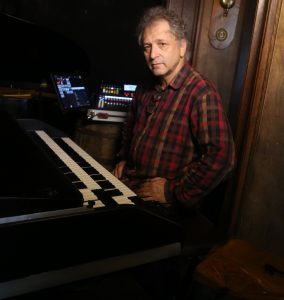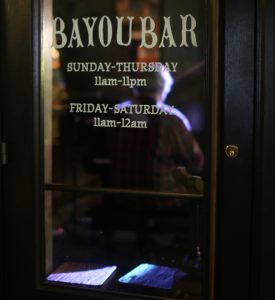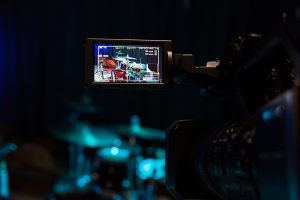Tag Archives: COVID-19
David Torkanowsky: Livestreaming in the Big Easy with StudioLive 32SC
[For those of you who don’t know already about the talented New Orleans based jazz pianist David Torkanowsky, you are about to. Lucky for us, New Orleans is just an hour drive to the Southeast of Baton Rouge (where PreSonus is based out of).
We’re honored to have our relationship with David: not only is he a true master improvising musician from the city where Jazz was born, he is also in tune with the latest 21st century audio technology that helps artists actualize and share their sound to audiences world-wide.
Without any further ado, we’ll let him take it from here…]
I’m David Torkanowsky and I’ve been lucky to have grown up in New Orleans under the tutelage of Ellis Marsalis, Danny Barker, James Black, Al Hirt and other Smithsonian-level greats… too many to mention.
I’ve also toured and recorded with artists as different as Al Hirt and Al Jarreau, Boney James, and Joe Henderson. I’ve been M.D. for the great vocalist Dianne Reeves.
The touring and performance economic model for all musicians, regardless of genre, has been decimated by the COVID-19 pandemic.
Many artists, myself included, have navigated a sudden and steep learning curve regarding our social media presence. New Orleans has always tended toward the organic and away from the technical aspects of playing music, which I love… but that paradigm has proven to be a headwind as we move toward our new reality.
Online work has moved from being one of the revenue channels in our business model to the only viable channel.
Posted by PreSonus Audio Electronics on Thursday, May 28, 2020
So, I’ve been producing, directing and playing in livestreams from The Bayou Bar at The Pontchartrain Hotel in New Orleans for the past month, with artists such as: Ivan Neville, Nigel Hall, The Tin Men, Zachary Richard, Meschiya Lake, Sasha Masakowski, Jason Marsalis, Herlin Riley, Davell Crawford, and jazz great Cyrille Aimée.
Many cats are teaching online, and many more are performing live. These live performances have completely replaced the in-person delivery of our art. Although, in many respects, it will never duplicate the transformative experience of being in the same space. The only way we can minimize this disparity is by presenting this content in the best possible way. Primarily, it has to sound good! Most of the streams that I’ve seen, some with world-class artists, don’t really touch me because they sound less than average. A solo acoustic instrument can sound just okay through an iPhone mic, but it’s never truly impactful. Add any other instruments, and you can just forget about it.
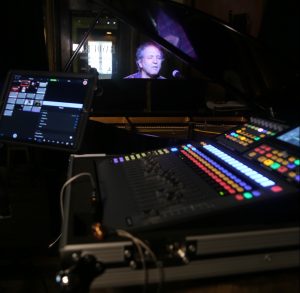 That’s why the PreSonus partnership has been such an asset.
That’s why the PreSonus partnership has been such an asset.
I’ve gotten a massive amount of feedback (the good kind!) from the listening public about how amazing these artists are sounding on these social media live broadcasts, and there’s one reason:
The PreSonus StudioLive 32SC. Their newest Series III S line of consoles are exactly what the doctor ordered to mix streamed performances. I’m using the 32SC, the powerful and compact member of the Series III family. The Fat Channel technology makes tweaking the impact of a particular instrument intuitive and fast. The EQ, Compression and digital FX are all super usable. It’s a game-changer. It’s one serious piece of gear!
Contact David for professional inquiries: torkanowsky@me.com
[Incidentally, from now until Aug 31, 2020, anybody who buys a qualifying StudioLive Mixer will get a pair of Eris E7 monitors for free!]
The show must go on. How to live stream your gigs in the time of COVID-19.
With concerns about COVID-19 canceling gatherings of all sizes, from SXSW to the Pearl Jam tour, musicians might be finding their own gigs also canceled or suddenly playing to an empty house. In this new and temporary era of social distance, live streaming your band’s performances might be the solution.
Live streaming is a great way to gain new fans, continue to entertain your loyal fanbase, and sell more content when you can’t play at the local summer festival or proceed with your tour as planned—but getting started can be a little daunting. Whether you’re an established band with a devoted following or an emerging artist looking to building your fanbase; live streaming is perhaps the best way to share your talent and music with a limitless audience.
PreSonus has put together this guide to help provide some tips and tricks to get started live streaming and keep the music going.
Start Small
If you’re like most musicians, the quality of your performance improves when you’re in front of an audience that is participating in your performance, applauding and cheering you on. This is perhaps the biggest challenge when beginning live streaming: you must find a way to bring that same energy to a camera in an otherwise empty room.
One way to get started is to create brief excerpts of a rehearsal to use as a story in your band’s Facebook or Instagram feed. This takes off some of the pressure because the video can’t be very long. Another method is to bring the audience to you. If you’re self-isolating with your family or roommates, put them to use and use them as your audience. This lets you merge your physical and virtual audiences, giving you some comfort with the medium before the camera becomes the only member of the crowd.
Choosing a Streaming Medium
 When you’re first beginning to create live streams for your band, controlling the cost to your band’s budget is critical. And while there are paid services that will allow you to create a private live stream that is ad-free and customizable, until you have an established audience, the cost for these services may not be justifiable. Services like YouTube Live, Facebook Live, and You Now will let you broadcast your performances for free and are designed to help you create a relatively stress-free live stream. Some free services will even let you preview your live stream before it goes live so you can make sure the quality is exactly what you want to broadcast. The trade-off is that these free services will interrupt your broadcast with ads, but this is a relatively small price to pay. Additionally, these free services already have millions of users who may stumble on your live stream, providing greater access for more impressions.
When you’re first beginning to create live streams for your band, controlling the cost to your band’s budget is critical. And while there are paid services that will allow you to create a private live stream that is ad-free and customizable, until you have an established audience, the cost for these services may not be justifiable. Services like YouTube Live, Facebook Live, and You Now will let you broadcast your performances for free and are designed to help you create a relatively stress-free live stream. Some free services will even let you preview your live stream before it goes live so you can make sure the quality is exactly what you want to broadcast. The trade-off is that these free services will interrupt your broadcast with ads, but this is a relatively small price to pay. Additionally, these free services already have millions of users who may stumble on your live stream, providing greater access for more impressions.
Choosing your Camera and Connection
Making your live stream look and sound as professional as possible is the best way to attract attention. After all, nobody likes to watch a video that looks bad and sounds worse. To live stream your band’s performances, you’ll need some basic video production equipment to represent yourself well. There are several options based on your budget, but here are the essentials:
- Camera. Webcams are often the first thought when considering live streaming, but inexpensive doesn’t usually mean quality. We recommend using an HD camcorder, DSLR, or Mirrorless Camera with excellent video quality. 1080p is the current standard in resolution, however many 4K cameras are becoming more affordable. (It’s important to note that consider some streaming platforms will not output in 4K.) Be sure to investigate how a camera performs in low light; some cameras, like those designed for action, may not perform in low light situations that are more suitable for creating the right vibe for a live performance. And remember, just like an audio interface or a mixer, a good camera can be an investment into photography or video recording other than your live stream, so buy something that will fit all your needs. The good news is than an excellent camera that will suit all your needs can be purchased for less than $500.
- Lens. Camcorders can have great quality and you don’t need to purchase any lenses. That being said, they aren’t as versatile and won’t have the same video quality of a DSLR or Mirrorless camera. Many cameras will come with a kit lens that has a variable focal length and a low F-Stop that will most likely work for you.
- Light. Don’t forget about lighting before you record your live stream. Even if you just use a well lit room or have a large window, it can make a huge difference. There are many options for lighting such as LED, fluorescent, and tungsten. It is important to match the white balance of your camera to your lights as well as diffuse the light so it isn’t just bright, but also soft and photogenic.
- Tripod or Mount. You are going to need something to setup, frame, and stabilize yours shots. Every tripod has a suggested weight limit, so get one based on your needs.
- Power. When you’re live streaming your band’s performance, you don’t want to run anything on batteries. Make sure every piece of equipment has a power system to ensure your camera doesn’t die out during a long broadcast.
- Video encoder. A video encoder is a piece of hardware or software that takes your video content and converts it to a digital format so that you can stream it on the Internet. There are many different types of encoders on the market and with just a little research, you can find one to suit your needs and your budget.
- Video Switcher (optional). A single camera shot will work well for many live streams, but if you want to take yours to the next level, a multi-camera shot will add another dimension to the final product. Investing in a video switcher will allow you to switch between multiple cameras or video sources and will cost around $1000. Be sure to look for a device with XLR audio inputs to bring in your audio.
- Internet Connection. A strong internet connection is required if you want to live stream. HD streaming requires 3 to 5Mbps, and 4K will require 25Mbps.
Choosing your Audio Interface
The way you record the audio for your live stream is the difference between standing out and turning off your audience. If the sound quality on your live stream is professional, your band will be presented at its best. After all, your music is what will attract your audience!
The easiest way to record your band for a live stream is to use a mixer with stereo recording capability. This will allow you to create a live mix (much in the same way you create a mix for a live performance). If your band is already gigging and rehearsing, chances are you’re already looking for a good mixer. The great news is that many modern mixers offer some level of audio recording ability. Whether analog or digital, a mixer with onboard recording can provide a cost-effective solution to create an amazing live stream sound. Let’s take a look at both approaches:
Analog Mixers
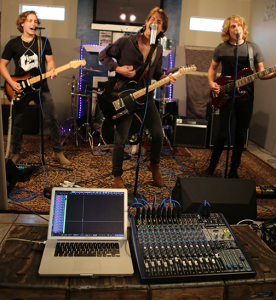 At their core, most analog mixers share many of the same features and functions. The biggest advantage of analog mixers is that they’re generally less complicated and less expensive than digital mixers of the same frame size. The disadvantage is that analog mixers usually have fewer onboard features than digital mixers, and their sound quality depends entirely on the quality of the analog circuitry.
At their core, most analog mixers share many of the same features and functions. The biggest advantage of analog mixers is that they’re generally less complicated and less expensive than digital mixers of the same frame size. The disadvantage is that analog mixers usually have fewer onboard features than digital mixers, and their sound quality depends entirely on the quality of the analog circuitry.
Some analog mixers, use great-sounding analog circuitry, provide EQ on every channel, offer monitor mixing options, and include an onboard effects processor for reverb and delay effects with an integrated audio interface. Depending on the mixer model, this audio interface might be a simple stereo output so you can record the main mix or provide you with a full 24-bit, 96 kHz multitrack recording interface that lets you capture every input channel, plus the main mix. These hybrid analog mixer/audio interfaces are give you all the tools you need to create your live streams and high-quality studio tracks.
Digital Mixers
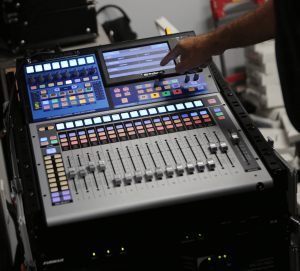 Digital mixers include the basic functions provided by their analog cousins and add many tools that save you money by eliminating the need for expensive outboard equalizers, compressors, noise gates, multi-effects processors, and the like. While you don’t need these processors just to mix audio, they are essential for producing better-sounding, more polished mixes. All these tools are done courtesy of an onboard digital signal processor (DSP). This processor is responsible for routing, level control, and so on. Full-featured digital mixers provide plenty of graphic and parametric EQ, dynamics processing, and more.
Digital mixers include the basic functions provided by their analog cousins and add many tools that save you money by eliminating the need for expensive outboard equalizers, compressors, noise gates, multi-effects processors, and the like. While you don’t need these processors just to mix audio, they are essential for producing better-sounding, more polished mixes. All these tools are done courtesy of an onboard digital signal processor (DSP). This processor is responsible for routing, level control, and so on. Full-featured digital mixers provide plenty of graphic and parametric EQ, dynamics processing, and more.
Some digital mixers combine the simplicity of an analog mixer with the processing power of a digital mixer and include an onboard audio interface. Because the parametric EQ, compression, noise gate, and limiter are available on every input and output, you save the cost of outboard gear and mountains of cables, as well as the hassle of connecting it all so your live stream will sound great.
Digital mixers also provide simple ways to manage a large mix, making it even easier to manage high channel count mixes in a live recording situation by providing DCA groups. Each group is given a master level control so you can control the overall level of the group while maintaining each channel’s relative balance in the mix. In this way, for example, you can create a single fader to control every mic on the drum kit, making it easier to control the overall level in the main mix.
Many digital mixers also provide an onboard audio interface, so all you need to do is connect your gear and your computer and you’re ready to record.
Audio Interfaces
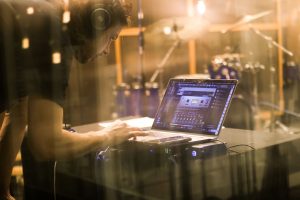 If you have a studio production background and are comfortable mixing in a DAW, a traditional audio interface may be an excellent solution for you. When using an audio interface, you must route the main output from your DAW to a set of inputs on your audio interface. These inputs will be the stereo audio source for your live stream.
If you have a studio production background and are comfortable mixing in a DAW, a traditional audio interface may be an excellent solution for you. When using an audio interface, you must route the main output from your DAW to a set of inputs on your audio interface. These inputs will be the stereo audio source for your live stream.
At this point, you will need to create a loopback for your live stream. An easy way to do this is to use the S/PDIF input and output that many interfaces. S/PDIF is a stereo digital audio standard that is ideally suited for this workaround; this is what we will be using for the loopback in this example:
- In your DAW, patch the main output to the S/PDIF out on your audio interface.
- Patch the S/PDIF output to the S/PDIF input on your audio interface using a S/PDIF cable.
- In your live stream software, select the S/PDIF input as the audio source. Make sure that the S/PDIF input is not enabled for recording in your DAW.
When using an audio interface for live streaming, you will want to select one that also allows you to monitor your performance. Some audio interfaces offer an onboard DSP that provides low-latency monitor mixes. Other audio interfaces provide a fast enough transport speed that you can monitor your performance through the plugins and mix engine in your DAW.
Choosing a Computer
Audio and video production require a powerful CPU to ensure the best performance. The computer you use can be a Mac® or Windows® PC, so you can continue to use whichever operating system with which you’re most comfortable. The first thing you’ll need to check is the system requirements for the streaming application you’d like to use. Keep in mind that the “minimum system requirements” published by any accessory hardware or software manufacturer are just that: The bare minimum computer specs that you need to get the bare minimum level of performance.
The better your computer specs are, the more smoothly your live streaming will go.
Lights, Camera, Action
After some practice runs and careful preparation, it’s time to launch your live stream. Unlike a live performance at a local venue, the audience will be as close to you as your camera. When filming the band together, being camera-conscious means that band members should select coordinating outfits that will not distract or detract from your musical performance. It’s always a good idea to simply film a few performances and critique your camera presence before launching your live stream. Great visuals to go with your polished music production will go a long way to attract new followers and grow your audience.
But I’m Not an Audio Engineer
One of the biggest challenges when creating your live stream might be the fear that your audio will not sound its best. Now is a great time to team up with a local live sound engineer in your area. With so many gigs being canceled, many audio engineers have lost their steady source of income. So, why not reach out and hire an audio engineer to run your live stream show for you? Even better, get a few mixing lessons so you can continue to live stream when life returns to normal. And it will go back to normal.
From your friends at PreSonus—be safe, be inspired, and keep creating.
